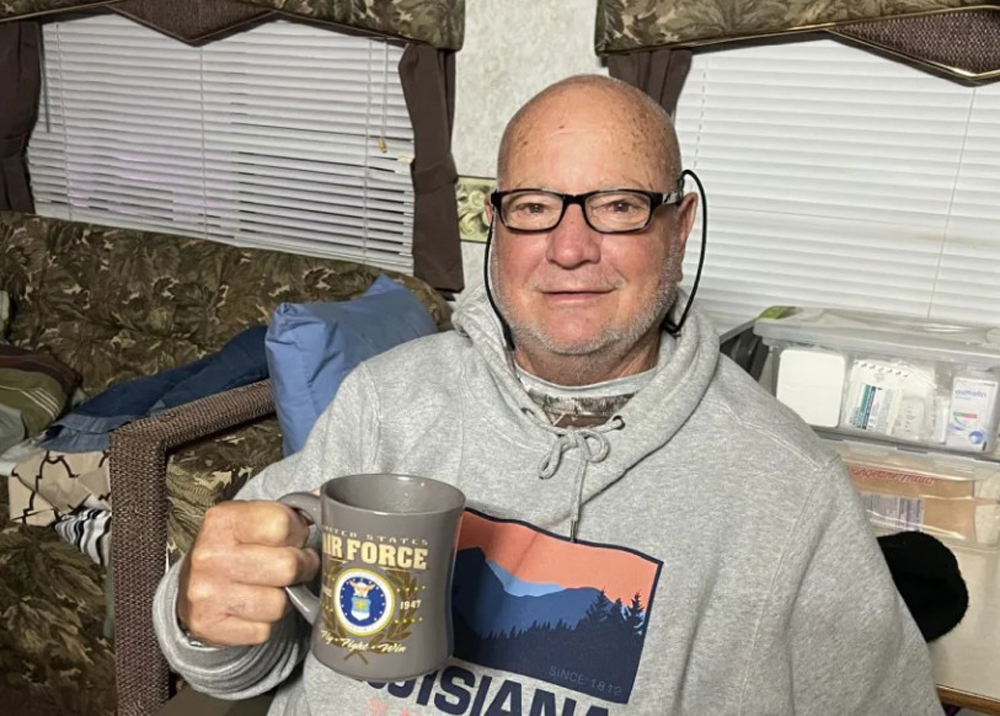In a quiet fishing village southwest of New Orleans, Louisiana, Lyons spent a morning on his 6-meter boat, preparing crab traps for his grandchildren, a task he'd performed thousands of times. This time, however, he noticed a small scratch on his leg.
The next day, Lyons woke up feeling delirious, feverish, and nauseous. Initially dismissing it as a stomach bug, he soon discovered a series of darkening sores spreading across his left leg, prompting a visit to the hospital.
The doctor immediately recognized the symptoms and rushed him to the emergency room. Within an hour, Lyons found himself in the operating room. The minor scratch had become an entry point for Vibrio vulnificus, commonly known as flesh-eating bacteria. The black sores were a sign of necrotizing fasciitis, a rapidly progressing bacterial infection of the soft tissue that can lead to necrosis and become life-threatening, according to the Cleveland Clinic.
 |
Linard Lyons. Photo: Linard Lyons |
Linard Lyons. Photo: Linard Lyons
This potentially deadly bacterium thrives naturally in coastal waters during warmer months, especially in brackish water, according to the US Centers for Disease Control and Prevention (CDC). Once primarily found in the Gulf region, infections have surged along the East Coast, with an 800% increase from 1988 to 2018.
"Do I have permission to do whatever it takes to save your life?" the doctor asked Lyons. Those were the last words Lyons remembered before surgery. He immediately understood the gravity of the situation, realizing his leg might need amputation.
"My chances of survival were 50%," Lyons said.
Surgeons managed to remove the infected tissue and save his leg. After three days in intensive care, three weeks in the hospital, and multiple antibiotics, Lyons was finally clear of the bacteria. However, recovery wasn't easy for Lyons, who has diabetes. He described it as "agony" but remains hopeful that an upcoming skin graft will be the final step in restoring his leg to normal.
Dr. Daniel Edney, Mississippi's state health officer, notes that Vibrio vulnificus is not typically deadly for healthy individuals, but those with weakened immune systems are at higher risk. He advises anyone entering coastal waters to assume the presence of Vibrio and avoid the water if they have any open cuts or wounds.
Vibrio infections aren't limited to waterborne exposure; they can also originate from consuming certain foods. According to the Louisiana Department of Health, restaurants selling raw oysters in the state are required to prominently display a warning on their menus: "Consuming raw or undercooked meats, poultry, seafood, shellfish, or eggs may increase your risk of foodborne illness, especially if you have certain medical conditions." Oysters, which feed by filtering seawater, can concentrate Vibrio vulnificus up to 100 times the level found in the surrounding water.
Although rare, Vibrio vulnificus infections can be severe, requiring intensive care or amputation. Approximately one in five infected people die, sometimes within one or two days of becoming ill, according to the CDC.
Louisiana is experiencing a surge in Vibrio vulnificus cases, with 17 hospitalizations and 4 deaths reported by the end of July, significantly higher than usual. This deadly bacteria is not confined to the Gulf states, spreading north due to rising sea temperatures. Massachusetts has also confirmed a "very rare" case. Other East Coast states like Virginia, North Carolina, and New York have seen a substantial increase in Vibriosis cases over the past decade. Scientists believe this alarming trend is directly linked to climate change.
Lyons encourages everyone to learn about Vibrio and hopes local authorities will raise awareness with more signage for both residents and tourists. The CDC advises that any wound, even a minor scratch, should be thoroughly washed with soap and clean water.
Binh Minh (CNN)












